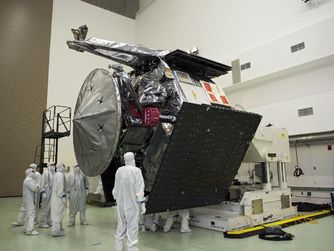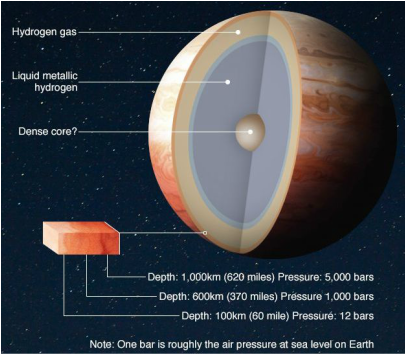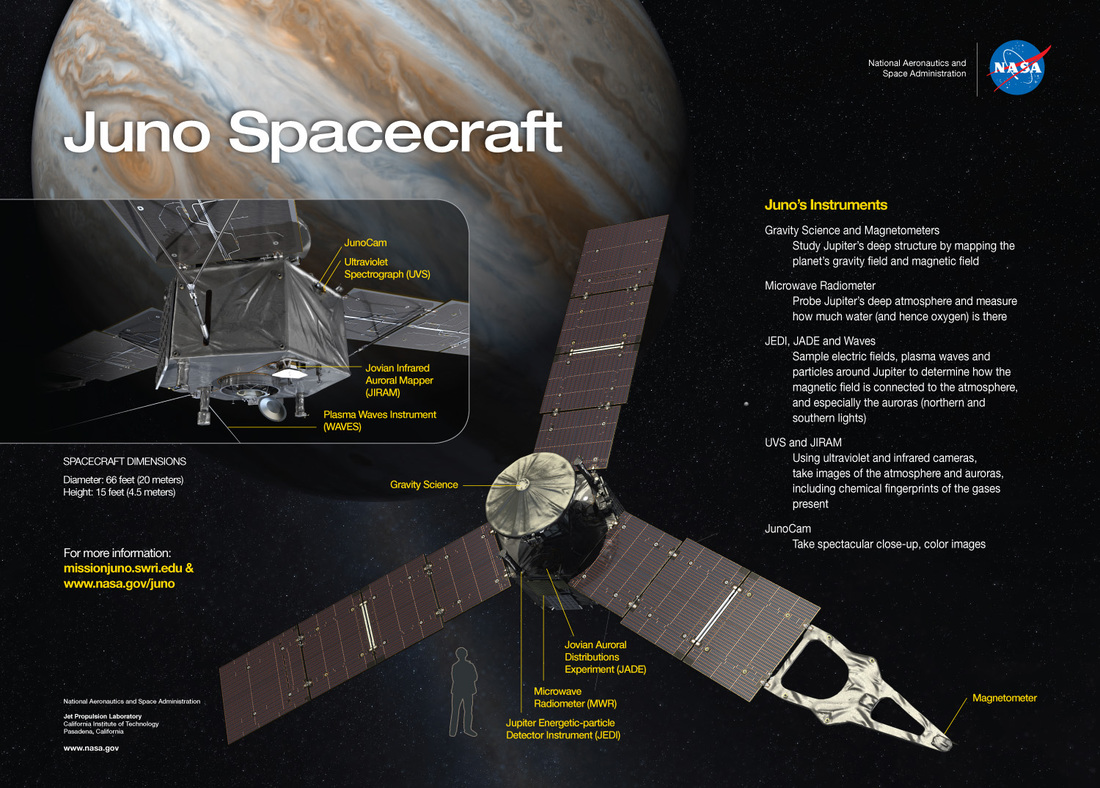
Launched on 5 August 2011 (see blog post 8/8/2011), the spacecraft weighed in at about 3.5 tonnes. After a complex journey involving an Earth swing-by and 2 primary deep space manoeuvres, Juno’s Jupiter Orbit Insertion (JOI) burn began at 4.18 BST (3.18 UT) on 5 July 2016 at an altitude of 4,200 km above the 1 bar surface of the giant gaseous planet. Since Jupiter does not have a definite surface, this height is expressed in kilometres above the Jovian atmospheric surface where the pressure is equal to the atmospheric pressure at the Earth’s surface. The burn lasted the planned 35 minutes – the British built thruster performed flawlessly – which slowed Juno’s speed by 480 m/s. This change in speed (delta-V) was sufficient to allow Juno to be captured by Jupiter’s gravity field and inject it into a large and very elongated elliptical orbit. As the mission progresses, the height and shape of this initial orbit will be trimmed by further thruster firings. A consequence of this manoeuvre was that the spacecraft plunged deeper into Jupiter’s trapped radiation belts (analogous to Earth’s Van Allen Belts) than any spacecraft prior. A significant design feature of the spacecraft is that it requires to be heavily radiation-hardened, as the total radiation dose it will receive during the mission will be around 10 Mrad – sufficient to fry the electronics of a typical Earth orbiting spacecraft.
 Current assumptions about Jupiter's internal structure - Source NASA
Current assumptions about Jupiter's internal structure - Source NASA This is just the beginning of the Juno mission – to keep abreast of new developments go to the NASA Juno website: https://www.nasa.gov/mission_pages/juno/main/index.html

 RSS Feed
RSS Feed
